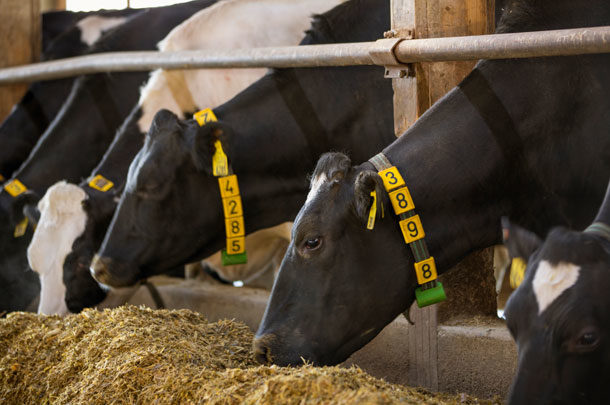Arguably the single greatest expense in silage production is not land cost, fertilizer, planting, seed, pesticide or even harvest cost – it is silage shrink. With energy values similar to corn grain, the material lost represents some of the highest value nutrients in the feed.
For example, corn silage shrink of 15 percent represents the effective nutritional dry matter loss of more than two bushels of corn grain per harvested ton. That can amount to nearly a quarter of the silage’s dollar value. The magnitude of the physical and economic losses associated with silage shrink demands that silage shrink becomes a priority in management on farms, especially when profit margins are narrow.
Some dry matter loss is unavoidable even with excellent management practices, but typically opportunities to reduce shrink are available. To create a strategy for controlling silage shrink, it is important to understand where and why shrink is occurring. All three primary phases of silage storage – fill, fermentation and feedout – result in shrink, so each needs attention.
Fill shrinkage
At harvest, any oxygen remaining in the silage after it has been put into the silo will be consumed via microbial activity, which depletes the silage of valuable feed nutrients. This process also releases water, carbon dioxide and heat into the silage, along with, potentially, other undesirable microorganisms. Silage-fill factors such as harvest moisture, fill rate, packing equipment weight, fill layers, fill slope and others play an important role in minimizing shrinkage at this stage.
Fermentation shrinkage
During fermentation, sugars are converted into organic acids that reduce the overall pH of the silage, thus preserving it. The efficiency at which this conversion takes place is highly variable and is largely determined by the specific species and strains of organisms that conduct the process. Homofermentative lactic acid bacteria are best suited to accomplish this task; however, wild organisms can compete for and thrive on the nutrients available in the feedstuff.
Utilizing a proven silage inoculant is beneficial for enhancing fermentation efficiency. Application of an effective inoculant to the silage at harvest can ensure that desirable and efficient strains of lactic acid bacteria dominate fermentation in the entire silo. Be aware, though, that like wild bacteria, silage inoculants vary widely in efficacy. Different strains, even within species of lactobacillus bacteria, convert sugars to organic acids with different levels of dry matter loss. Therefore, great care should be taken in evaluating the data behind silage inoculant products: Replicated research should support product claims to ensure minimal shrink.
Feedout shrinkage
University and private research indicates that half or more of dry matter loss occurs during the feedout phase when silage is re-exposed to oxygen. The aerobic yeasts and bacteria that remain dormant in the anaerobic and acidic environment of silage storage revive with air exposure, consuming valuable nutrients. The pH also begins to rise with extended oxygen exposure, which invites molds to grow.
Feeds with a tendency to experience excessive microbial activity at feedout are considered aerobically unstable. Aerobic instability results in additional dry matter loss, reduced nutritional value and heating that can reduce silage palatability. Aerobic instability at feedout can be reduced with excellent face management that minimizes air exposure. Using a bunker facer is a simple way to ensure a smooth face with minimal air exposure. Maximizing density at harvest, along with proper harvest moisture, will also reduce risk as air becomes less likely to permeate into the feedout face.
Inoculant benefits
Since even the best face management and silage compaction cannot fully relieve the risk of aerobic instability – particularly in high-moisture corn, corn silage and grass silages – the use of a silage inoculant containing L. buchneri should be considered to slow the dry matter loss and heating at feedout.
L. buchneri species are capable of converting lactic acid to acetic acid in storage with minimal energy loss. The acetic acid and associated compounds then act as a natural yeast and mold inhibitor at feedout. Like other lactic acid bacteria, different strains of L. buchneri offer different results in dry matter loss and aerobic stability improvements, so care should be taken in selecting the right product.
Silage dry matter loss will likely remain a challenge for the foreseeable future, because some losses are intrinsic to the ensiling process itself. However, implementation of intensive management practices at harvest and feedout, along with the use of an effective silage inoculant, can significantly reduce the associated costs. PD

Dann Bolinger
Dairy Specialist
DuPont Pioneer
PHOTO
Even if corn silage shrink equals only 15 percent, this can amount to nearly a quarter of the silage’s dollar value. Photo provided by Dann Bolinger.







